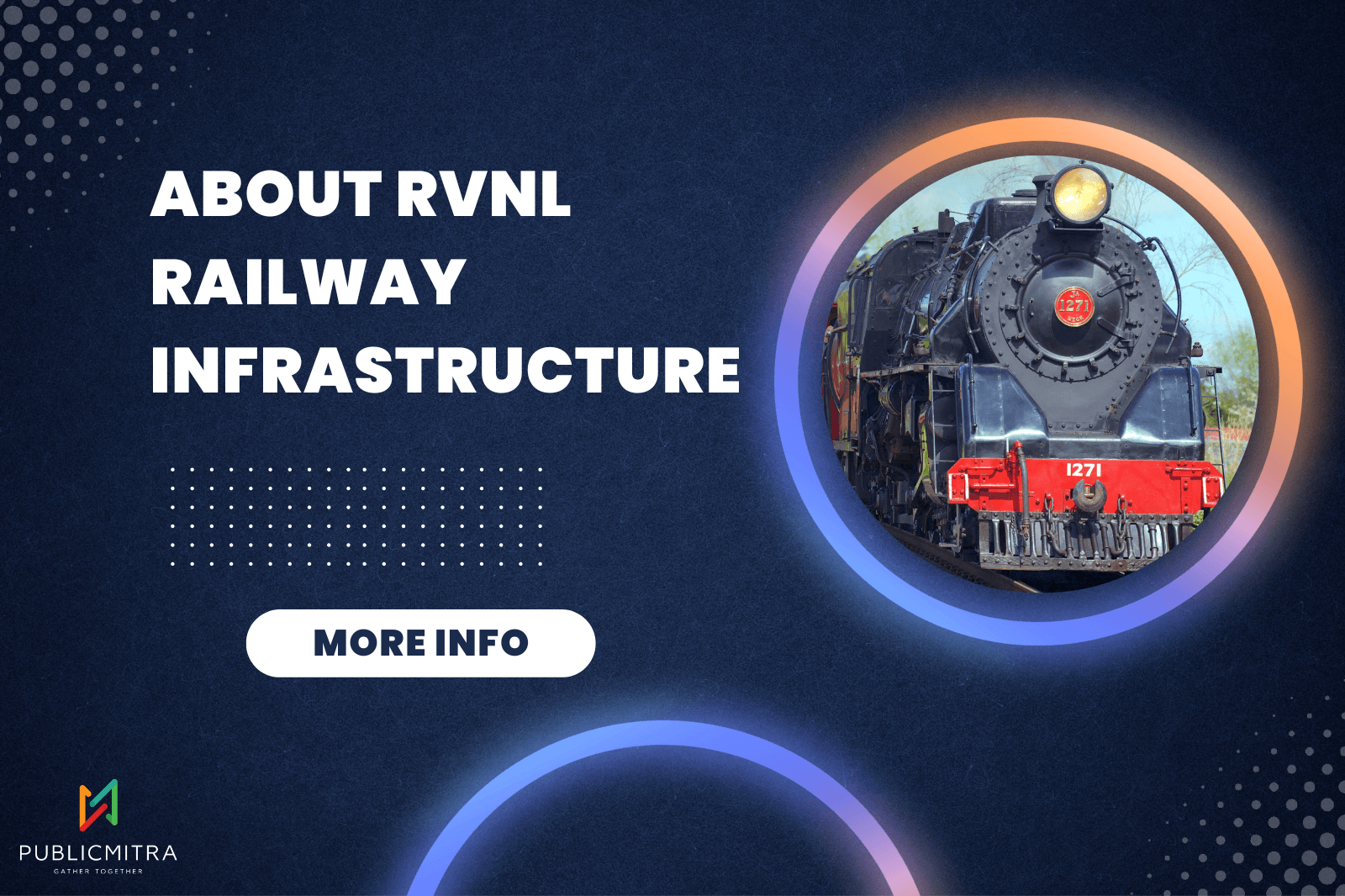About RVNL Railway Infrastructure
Introduction
Rail Vikas Nigam Limited (RVNL) stands as a pivotal entity within India’s rail network. It is an integral part of the government of India which operates under the aegis of the railway ministry. Incorporated on 24th January 2003, RVNL is an ambitious project to modernize the nation’s rail infrastructure that today plays an important role in guaranteeing seamless connectivity, effective transportation, and sustained growth.
It is a ‘Navratna’ CPSE in India, and the Indian Ministry of Railways is in charge of its administrative oversight.
From conception to commissioning, the company executes projects and establishes project-specific SPVs.
History of RVNL
Although the formal launch of NRVY and RVNL took place in 2003, its establishment in response to the national rail vikas yojana was announced on 15th August 2002 by the former prime minister Atal Bihari Vajpayee. The significant initiative recognized the need to bridge the deficit and update the country’s transport system, and it set out to revolutionize India’s rail infrastructure.
RVNL set out on a journey with two main goals after the official debut of NRVY and its incorporation in 2003: to increase the rail network’s capacity and to raise extra-budgetary resources for the realization of revolutionary initiatives.
Following these objectives, RVNL made quick development, going from a concept to a fully functional organization by March 2005. With the start of its initial public offering (IPO), which not only demonstrated its financial development but also attracted significant investor interest, the company reached an important turning point in its journey.
As RVNL continues to play a crucial role in determining the future of India’s transport system, this move underlined RVNL’s growing relevance in the field of rail infrastructure.
Products and Solutions
Holistic Project Execution:
RVNL brings ideas to life through a process that includes concept development, planning, design, construction, and commissioning. The seamless integration of each project into the larger rail ecosystem is ensured by this end-to-end procedure, which promotes productivity, connectivity, and expansion.
Special Purpose Vehicles (SPVs):
RVNL’s strategic inventiveness is demonstrated through the creation of project-specific SPVs that are intended to hasten and manage major initiatives. These SPVs function as independent entities, able to deal with difficulties and complexities while maintaining alignment with broader objectives.
Mobilising Extra-Budgetary Resources:
RVNL’s strategy is distinguished by its skill at mobilizing extra-budgetary resources. RVNL raises money for SPV projects using a combination of stock and debt, thereby sure that financial limitations do not thwart ambitious endeavors. This creative finance strategy fosters growth while utilizing a variety of financial sources.
Broad Range of Projects:
The effects of RVNL are seen in a wide range of projects. The portfolio of RVNL encompasses the full range of transport requirements, from fundamental rail infrastructure to sophisticated metro rails to recognizable bridges to game-changing high-speed rail.
The enterprise’s scope goes beyond merely tracks to encompass workshops, tunnels, and other structures, showcasing its adaptability in reshaping India’s transport system.
Subsidiaries and Joint Ventures
High-Speed Rail Corporation of India Limited (HSRC)
This subsidiary of RVNL emerges as a driving force behind India’s plans for high-speed rail. HSRC, which is in charge of putting high-speed rail projects into action, anticipates innovative transport options that completely alter how people move.
Kinet Railway Solutions Ltd
In a trailblazing move, RVNL created Kinet Railway Solutions Ltd., a private organization that is essential to achieving the goals of the Ministry of Railways. Kinet Railway Solutions Ltd, operating under a manufacturing-cum-maintenance agreement, fills the gap between conception and implementation and guarantees uninterrupted train services.
Kyrgyzindustry-RVNL
RVNL entered a joint venture known as Kyrgyzindustry-RVNL with an eye toward the global market. This organization, working with Kyrgyz business, is committed to developing the country’s infrastructure, including rail, road, and other systems.
Conclusion
The trajectory of RVNL is characterized by a dedication to growth, innovation, and toughness within the rail industry. With each milestone attained, RVNL opens the way for a time when India’s rail network will be a symbol of development, effectiveness, and a united country. The hope of a better tomorrow for India’s transit system keeps the voyage going.












